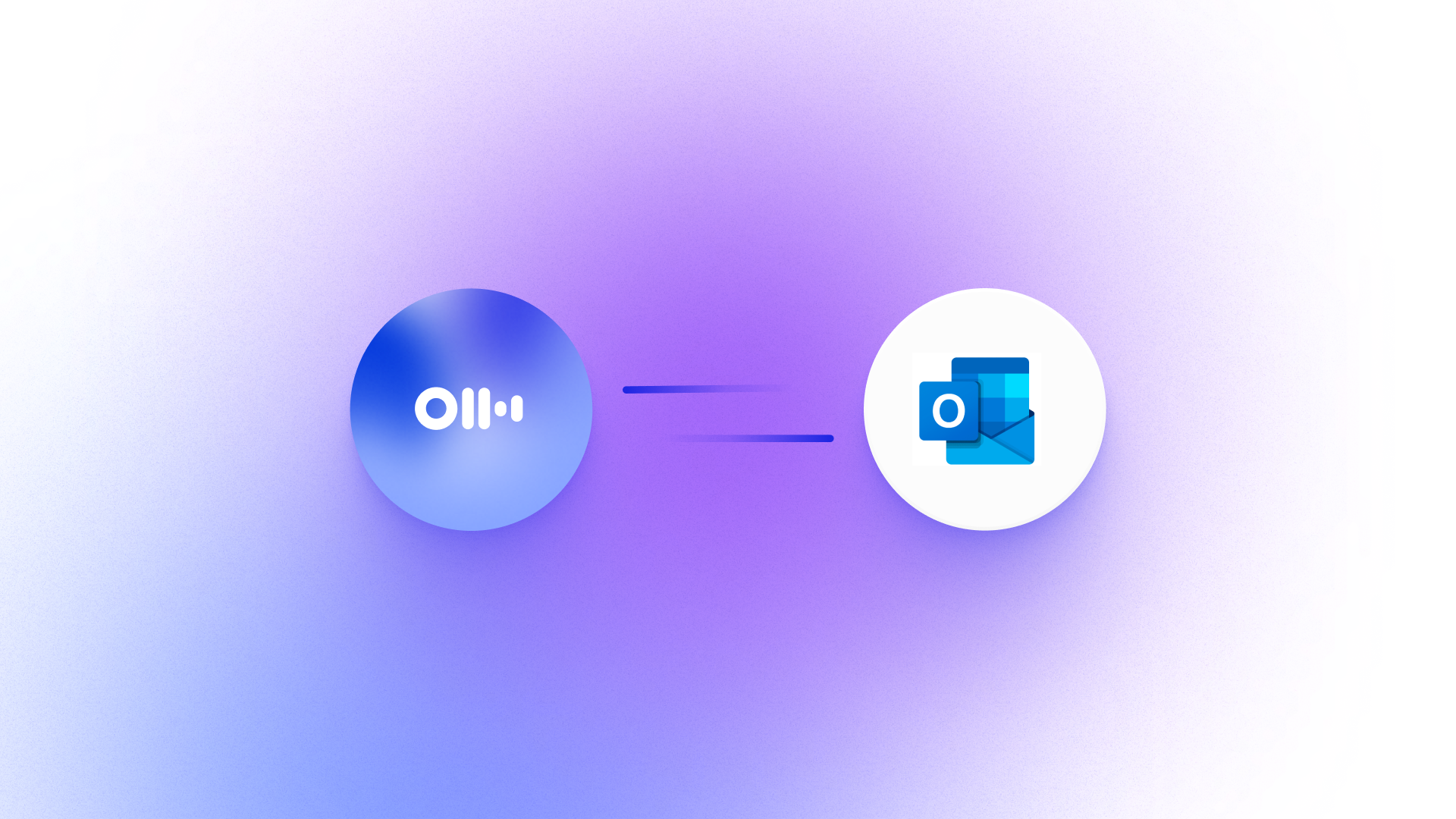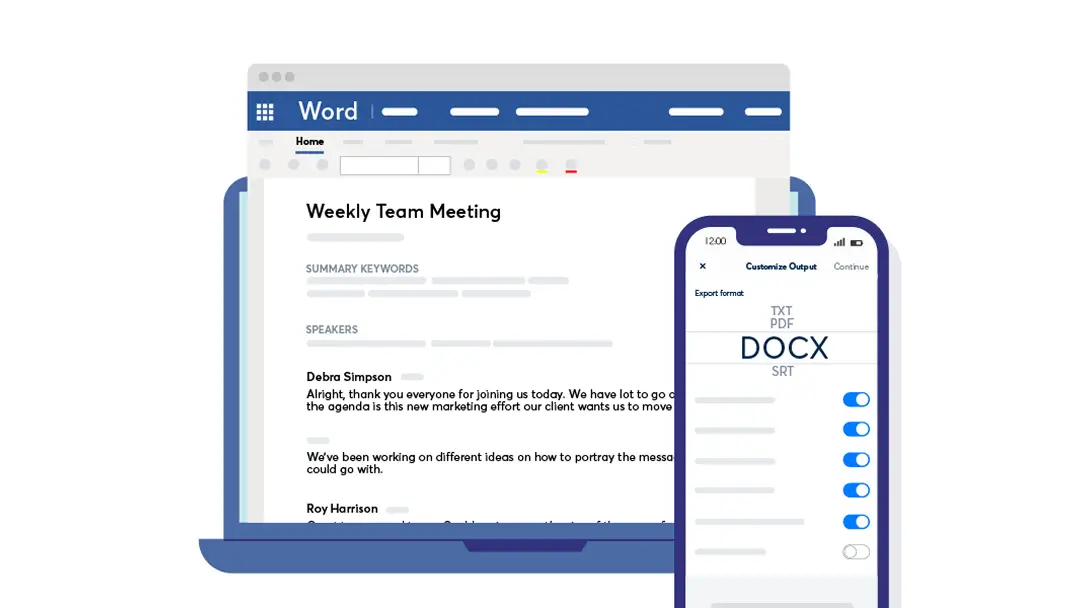Performance Review: Template, Tips, and How to Run One

Performance reviews are some of the most important tools for supporting employee development. Done right, they give people a chance to reflect on progress, provide meaningful feedback, and set clear goals for the future. Done poorly, they can feel stressful and disconnected from day-to-day work.
Structure and preparation make all the difference. With Otter’s Meeting Types feature, you can automatically convert your performance review meetings into searchable, editable transcripts. But that’s not the only strategy to improve your performance reviews as a manager or leader.
Let’s walk through what makes a strong performance review, how to write one, and tools to help you improve the process at every step.
The importance of performance reviews: 7 key aspects
A performance review is a structured discussion between an employee and their manager that focuses on the employee’s progress, impact, and possible areas for improvement. These reviews are often part of a formal performance appraisal, but their value extends beyond checkboxes or ratings.
Here are seven reasons why performance reviews matter:
1. Formal assessment
Performance reviews provide a documented evaluation of an employee’s contributions. This aids promotion planning, compensation decisions, and performance management over time.
2. Two-way conversation
A good review creates space for open dialogue. Employees should feel encouraged to share their perspective, offer constructive feedback, and ask performance review questions to clarify expectations.
3. Employee development
Reviews are an opportunity to talk about strengths, areas for improvement, and long-term career goals. These discussions align employee interests with company needs.
4. Constructive feedback
Specific, thoughtful input helps employees improve and feel supported in their roles. Without constructive feedback, there’s no room to grow.
5. Goal setting
Clear goals provide direction and accountability. Annual performance reviews can reset priorities and define the next steps in collaboration with each employee.
6. Improved communication
Regular employee performance reviews foster a culture of transparency. They help managers and employees stay aligned on roles, responsibilities, and team dynamics.
7. Recognition and motivation
When employees feel seen and valued, they’re more likely to stay engaged and motivated. A well-run performance evaluation reinforces positive behavior and acknowledges key wins.
How to write a performance review: 6 best practices
Learning how to write a performance review means finding the right balance between honest feedback and supportive guidance. These strategies can help:
1. Give constructive, actionable feedback
Avoid generic performance review comments. Be specific about what worked well, where improvements are needed, and what steps the employee can take next.
With Otter, you can access summaries from past reviews to quickly reference key insights and follow-ups. This makes it easier to give consistent feedback and track improvements.
2. Use the five-word framework
A simple way to cover essential competencies is through the five-word model:
Communication, Collaboration, Leadership, Time Management, and Adaptability.
This gives structure to your feedback while touching on core workplace skills.
3. Use concrete examples
Back up your points with real examples. Highlighting specific projects, interactions, or outcomes makes your feedback more meaningful and underscores key expectations.
4. Personalize the review
Each team member brings different strengths, goals, and challenges. Instead of following a generic formula, tailor the conversation to reflect their individual role and performance.
5. Listen actively
Create room for your employee to respond. With Otter’s AI Meeting Agent handling the transcription and summaries, you can stay focused on the conversation and ask valuable follow-up questions rather than splitting attention between listening and taking notes.
6. Encourage feedback
A great review is a conversation, not a lecture. Ask the employee what support they need, how they feel about their work, and what you could do better as a manager.
30 key performance review phrases with examples
Sometimes, the hardest part of performance reviews is finding the right words. Use these performance review examples to offer feedback that’s both clear and constructive. Each category includes positive and constructive example phrases.
Communication skills
- You communicate goals, expectations, and feedback clearly and effectively.
- You proactively share updates and keep stakeholders informed.
- You listen attentively and adapt your communication style to your audience.
- You sometimes leave out key details, which leads to misunderstandings.
- Delayed responses have made collaboration more difficult in recent weeks.
Creativity and innovation
- You regularly contribute creative solutions that improve team workflows.
- You take initiative to explore new tools and techniques that increase efficiency.
- You encourage colleagues to share innovative ideas in meetings and brainstorming sessions.
- Your approach tends to rely on familiar methods instead of exploring new options.
- You could benefit from seeking out more input before finalizing solutions.
Teamwork and collaboration
- You collaborate effectively across departments and contribute to shared goals.
- You show a strong sense of team ownership and support colleagues when needed.
- You adapt well to different team roles and build strong working relationships.
- Your reluctance to compromise has slowed down group decision-making.
- You sometimes prioritize individual tasks over team collaboration.
Adaptability
- You stay calm and focused when priorities shift unexpectedly.
- You adjust quickly to new tools, policies, or project requirements.
- You help others navigate change with a positive attitude and helpful suggestions.
- You’ve expressed resistance to recent changes that are now team-wide standards.
- You may benefit from adopting a more flexible approach to managing change.
Leadership
- You motivate others with a clear vision and lead by example.
- You consistently give timely and helpful feedback that supports team growth.
- You take ownership of results and foster accountability within the group.
- You’ve struggled to delegate tasks appropriately during recent projects.
- Team members have expressed a need for more clarity in your direction.
Time management
- You consistently meet deadlines and manage multiple projects effectively.
- You prioritize tasks well and adjust your schedule to meet team needs.
- You prepare thoroughly for meetings and contribute efficiently.
- You’ve missed a few important deadlines that impacted project delivery.
- You may benefit from revisiting your time estimates and workload planning.
Common pitfalls to avoid in performance reviews
Avoid these common mistakes and phrases that can derail an otherwise productive performance review:
Vague or generic feedback
Saying “great job” without specifics doesn’t help employees grow. To make feedback more actionable, use detailed observations and examples.
Focusing only on negatives
Even when performance needs improvement, it’s important to acknowledge wins and effort. Too much criticism can cause discouragement and demotivation. Balanced employee performance reviews are more motivating and more objective.
Lack of follow-up
Performance reviews shouldn’t be a once-a-year event. Without follow-up, feedback gets lost and progress stalls. With Otter, you can easily track conversations across time and revisit summaries during the next review cycle.
Ignoring employee input
Treating a review like a monologue — rather than a dialogue — limits its value. Make space for engaging one-on-one questions and active discussion.
Performance review template
A structured performance review template can guide your conversation and make sure you cover all the essentials. Here’s an example adapted from Otter’s Meeting Types tool:
Overview
The meeting covered key accomplishments from the past review period, strengths demonstrated, and areas for improvement. Goals for the next cycle were discussed, along with opportunities for growth and additional support.
Action items
- Define performance goals for the next quarter
- Offer feedback on project ownership and leadership development
- Identify training or mentorship opportunities
Insights
- Achievements: Led a product launch that exceeded engagement goals
- Strengths: Strong problem-solving and stakeholder management
- Challenges: Difficulty prioritizing due to shifting deadlines
Outline
- Performance Highlights (2:00)
- Strengths (7:45)
- Challenges (15:30)
- Support Plan (28:30)
You can find and customize this format in your Otter templates under Meeting Types. Use it as a starting point for any annual performance review or regular check-in meeting.
Keep track of every review with Otter
Performance reviews are most effective when they’re part of an ongoing conversation — not just an annual performance review. With Otter, you can simplify the entire process and stay organized from one review cycle to the next.
Otter automatically transcribes your review meetings in real time so you can stay focused on the conversation without worrying about taking notes. After the meeting, Otter generates a tailored summary with key takeaways and action items, helping both you and your employee stay aligned on goals and expectations.
Plus, if you need to reference a past review, Otter’s searchable transcripts make it easy to revisit specific insights or prepare for follow-up conversations. You can also use Otter AI Chat to draft summaries, generate performance review questions, or customize your language for each team member.
Whether you're managing a small team or leading company-wide evaluations, Otter helps you keep your performance reviews clear, consistent, and easy to follow.




















